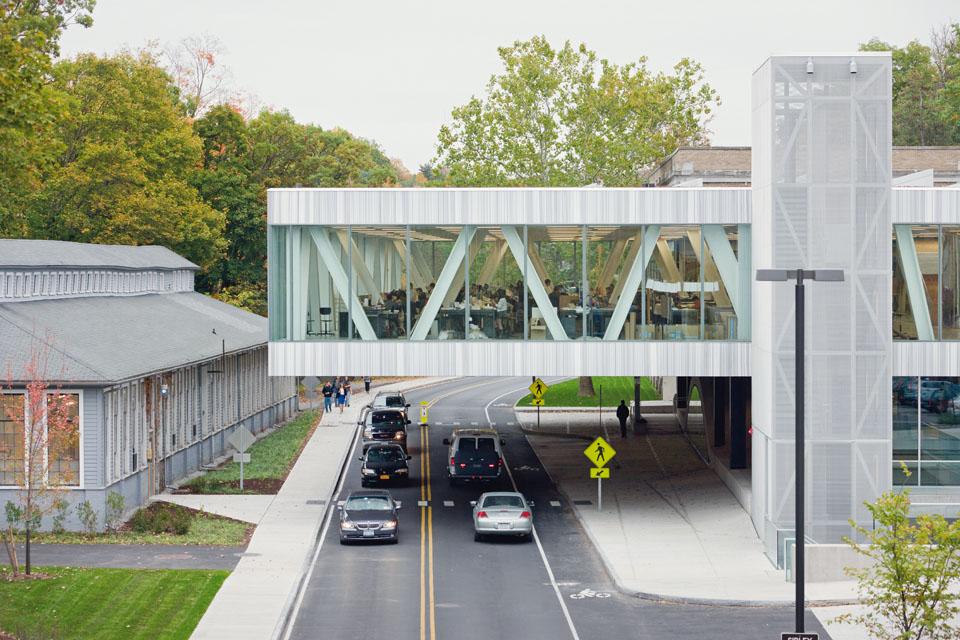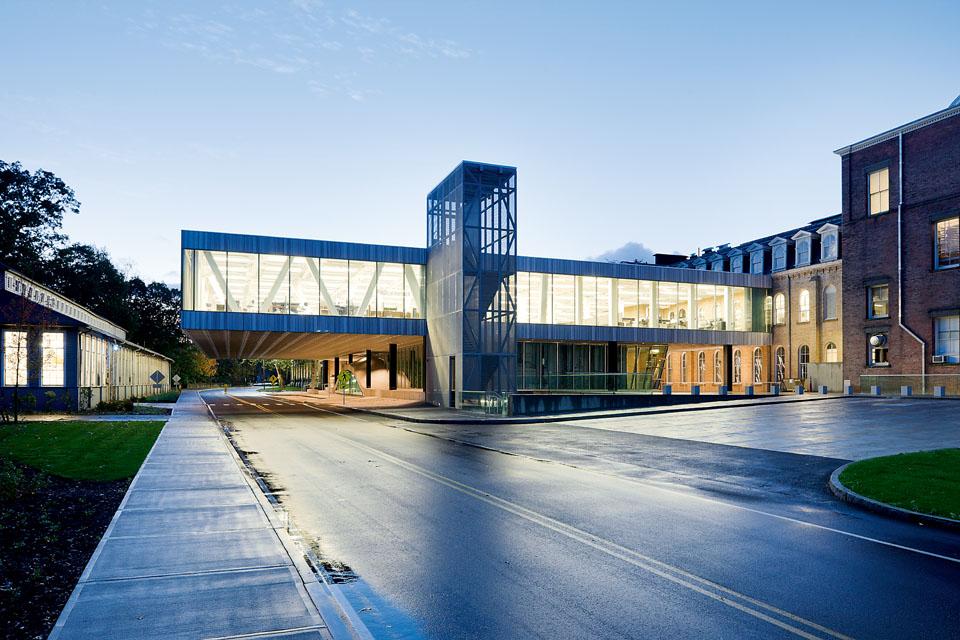It is a seminal year for architecture in America. Minoru Yamasaki completes the Twin Towers, the tallest buildings in the world. Louis Kahn delivers a canonical pair as well—the Phillips Exeter Academy Library and the Kimbell Art Museum. Yale gets its independent Architecture School, located in a bush-hammered concrete castle-like mammoth of a building by Paul Rudolph, and the Harvard Graduate School of Design inaugurates its robust Gund Hall by John Andrews. Back in New York, One Penn Plaza opens, a textbook example of "Manhattanism" designed by Kahn & Jacobs, the associate firm on Mies's Seagram Building—and the firm where author Ayn Rand witnesses firsthand architectural hubris while inventing Howard Roark, the protagonist in her novel The Fountainhead. 1972 is also "the year Modern architecture died". Charles Jencks's statement in reference to the demolition of Pruitt-Igoe, another Yamasaki-designed modernist housing project in St. Louis, announces the end of the JFK/Johnson era of reconstructing civil society, which produced a wave of bold, new-brutalist public and academic buildings throughout the US. Nixon's contrary urban policies put an end to such construction and spur a second wave of suburbanisation amplified by Vietnam veterans returning home. Learning from Las Vegas is published; things get messy; Post-Modernism is born.
It is this year that Rem Koolhaas relocates to Ithaca, New York, to study at Cornell University. The College of Architecture, Art and Planning—which counts among its graduates Peter Eisenman and his cousin Richard Meier—is led at that time by Oswald Mathias Ungers, OMU to friends. The school is situated in the 19th-century Sibley Hall at the Arts Quad on campus. Next door, I.M. Pei's iconic Johnson Museum of Art, a concrete building with massive rectangular forms and cantilevered spaces, is nearing completion. With its ingenious stacked programme, Pei realises one of the last forward-looking buildings on East Coast campuses for years.
Ungers's tenure at Cornell (1969–1975) not only serves as a catalyst for his career but also solidifies the department's international reputation as a centre of architectural thought, particularly Rationalism and Post-Modernism. His themes of transformation, interpretation, typology and metamorphosis affect the young Koolhaas. The early work by OMA—founded in 1975—is unmistakably influenced by the post-modern discourse of the time. Different from its contemporaries, however, OMA develops its specific breed of Post-Modernism, employing modern rather than classical signs and symbols, as illustrated by their contribution to Paolo Portoghesi's 1980 Venice Biennale titled The Presence of the Past.
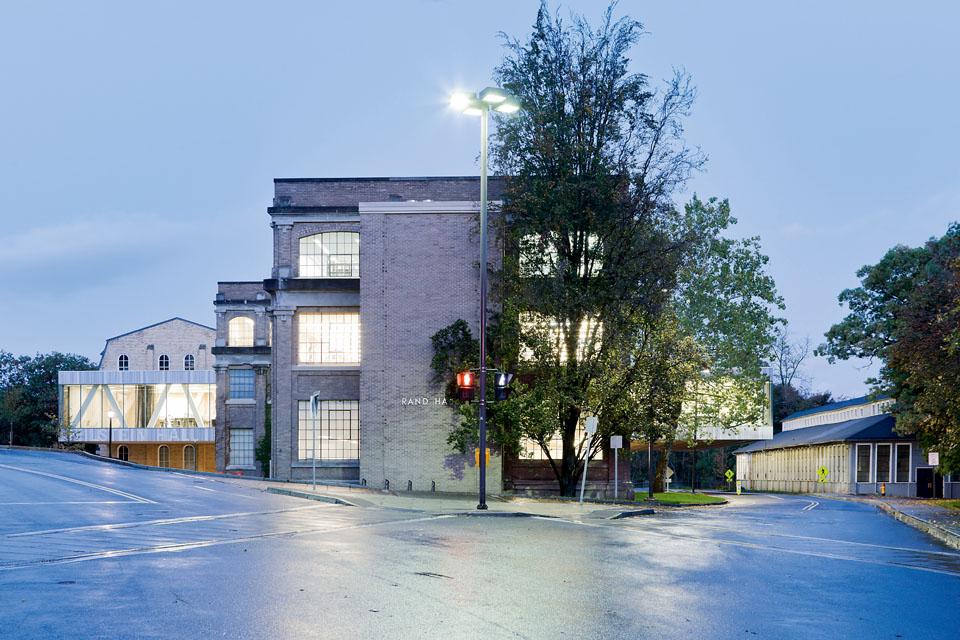
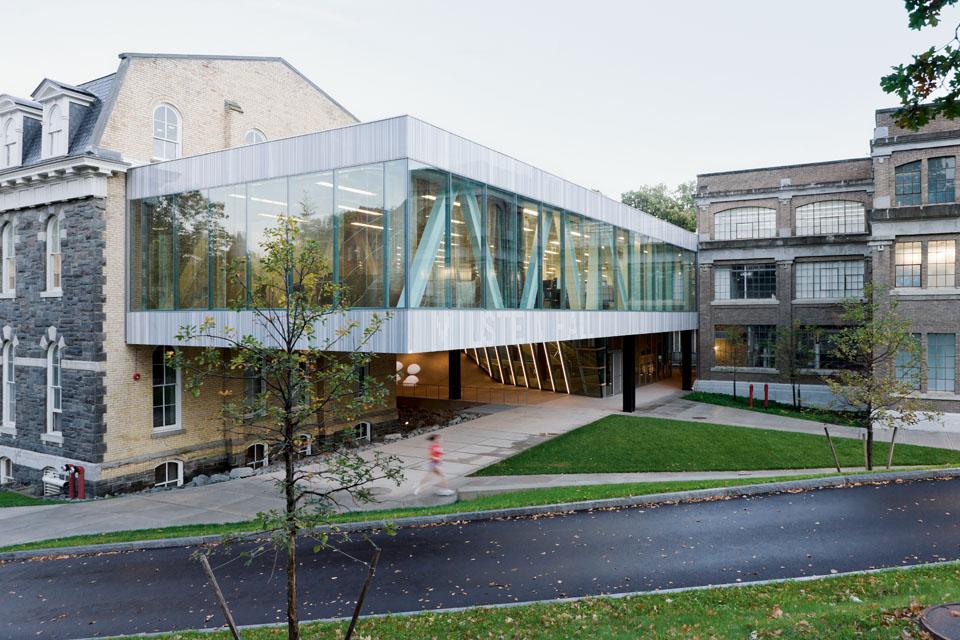
The lessons of Ungers and the dawn of post-modernity resound throughout the building. It is an arrangement of autonomous, basic geometries.
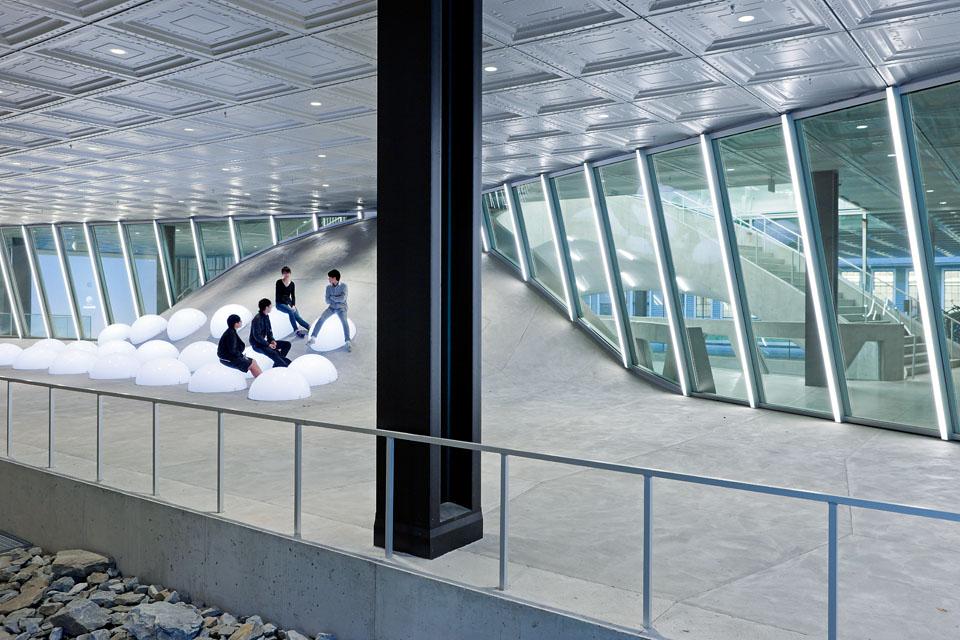
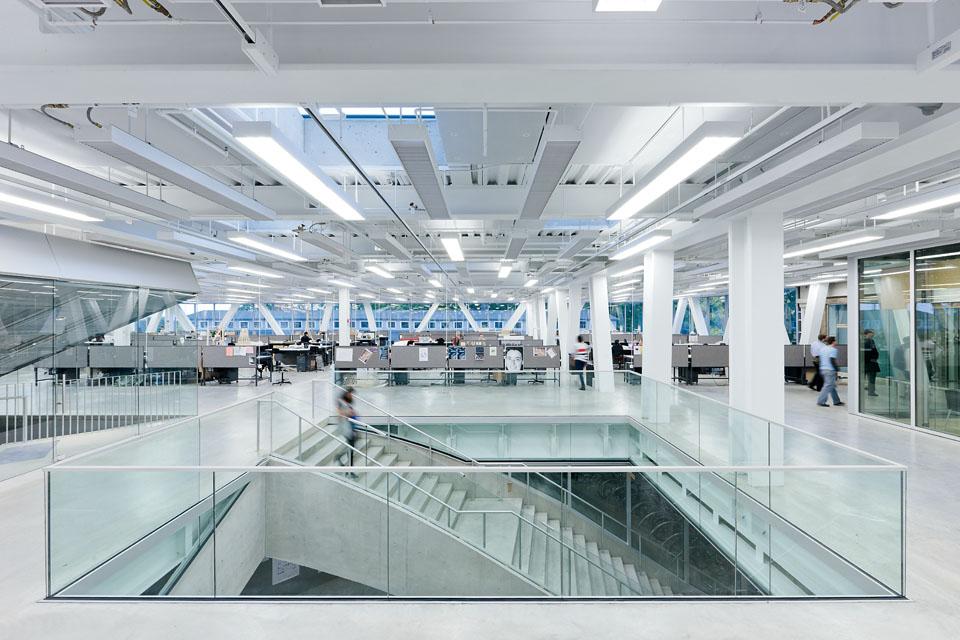
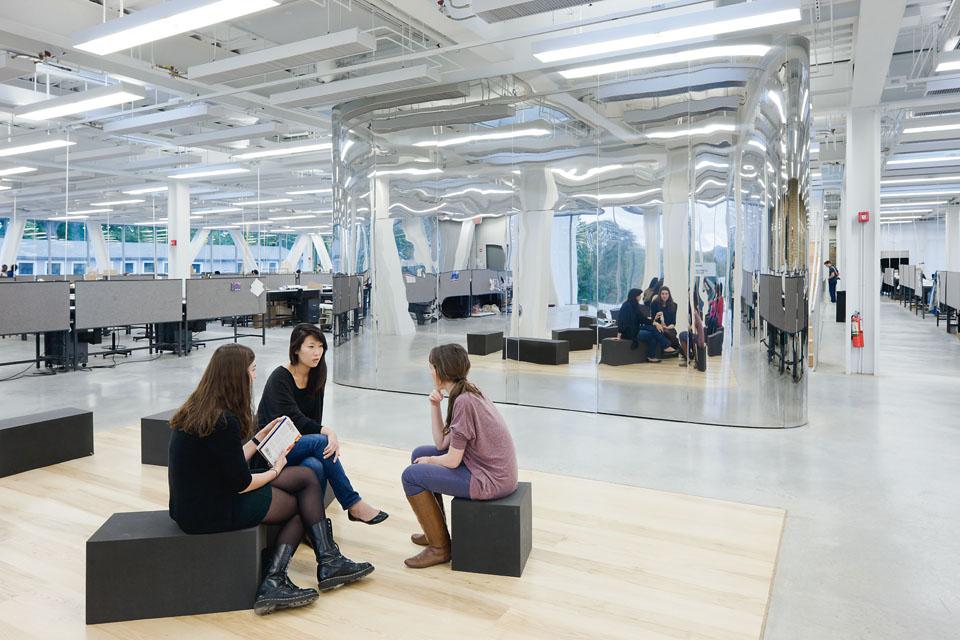
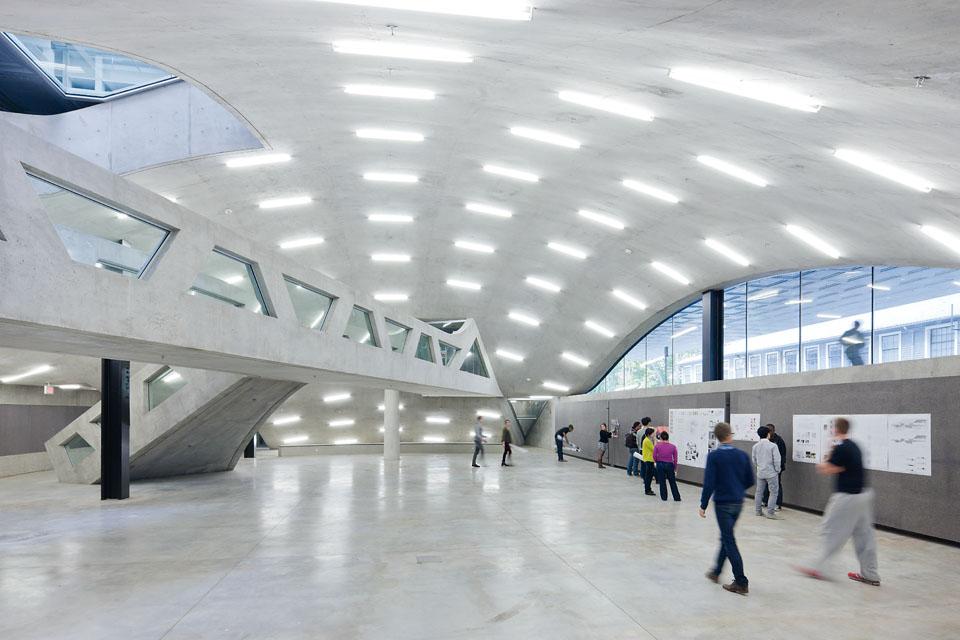
Florian Idenburg
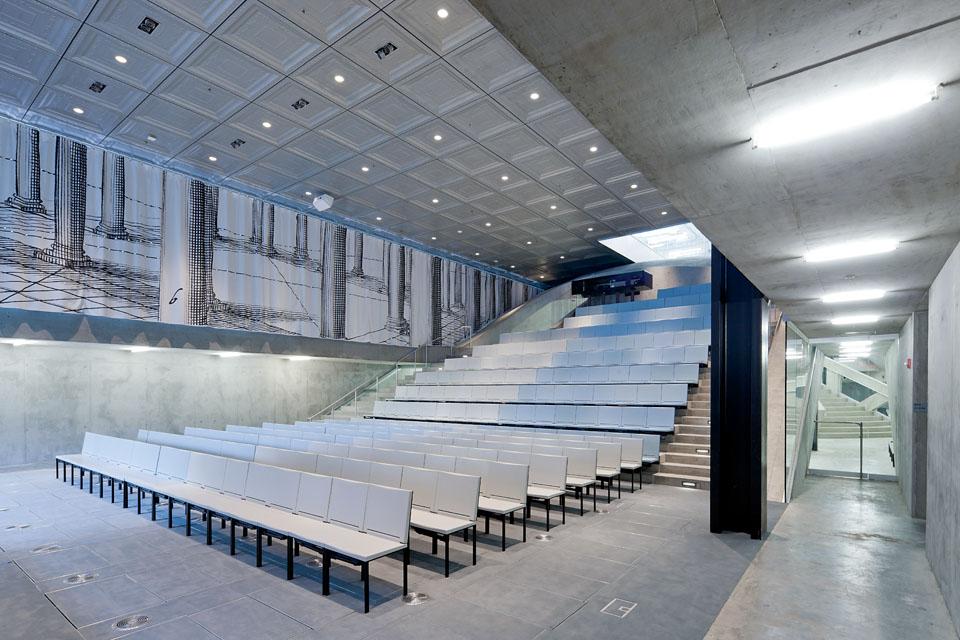
Partners-in-Charge: Rem Koolhaas, Shohei Shigematsu
Associate-in-charge: Ziad Shehab
Design Team: Jason Long, Michael Smith, Troy Schaum, Charles Berman, Amparo Casani, Noah Shepherd
Architect of Record: KHA Architects
Team: Laurence Burns, Jim Bash, Brandon Beal, Michael Ta, Stephen Heptig, Sharon Giles
Structural Engineering: Robert Silman Associates
MEP/FP: Plus Group Consulting Engineers
Civil Engineering, Site Utilities: GIE Niagara Engineering Inc.
Civil Engineering, Site and Grading: T.G. Miller
Acoustical Consultant: DHV V.B.
Facade Design and Engineering Consultant: Front
Lighting Consultant: Tillotson Design Associates
Landscape Architect: Scape Landscape Architecture
Curtain Design: Inside Outside, Petra Blaisse
Graphic Design: 2x4
Audio/Visual Consultant: Acentech
Roofing Consultant: BPD Roof Consulting
Elevator Consultant: Persohn/Hahn Associates
IT/Data/Security Consultant: Archi-Technology
Sustainability Consultant: BVM Engineering
Client: Cornell University, College of Architecture, Art and Planning (AAP)
